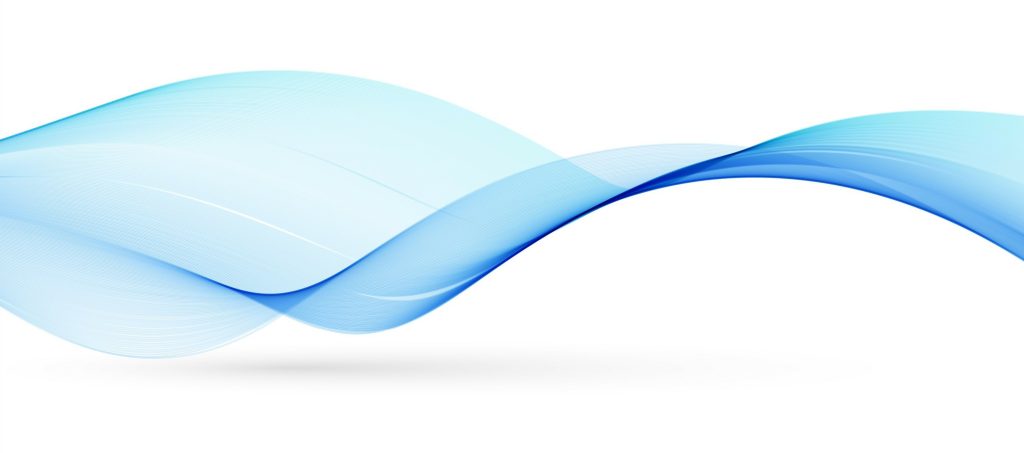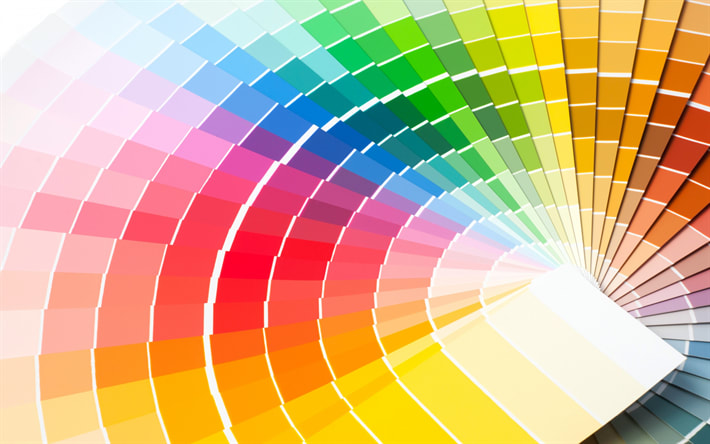

Colors Dictionary
Colors are grouped under three main groups:
1- Primary Colors: Red, Blue, Yellow. These colors cannot be achieved using other colors.
2- Secondary Colors: Orange, Green, Purple. These colors can be obtained with an equal amount of two main colors. Orange from red to yellow; purple from blue to red with blue; blue and yellow from the merger of yellow.

3- Tertiary Colors: These colors consist of combining primary and secondary colors in different proportions. There are recommended colors for some environments. For example, pastel colors are suitable for drawing rooms.
Recommended for gray, kitchen and dining venues. Very suitable for blue and green bedrooms. Colors match very well with complementary colors. For example; The complementary colors of blue are yellow, green and white. If blue is selected for the bedroom, the walls, doors and frames should be painted in yellow, green and white. Light colors; white, cream, light blue and green environment because it is larger and more spacious.
There are also effects on the mental state of people. E.g; white arouses a sense of competence in the human being, is a red stimulus, illuminates the yellow environment and gives warmth, light greens reminiscent of nature and gives freshness, reminds the brown soil, blue sky is the color of the seas and gives a feeling of coolness to the human.
The effects of the paints are divided into two as physical and aesthetic. Physically; large or small to show the place, as the place to show hot or cool, to advance the wall, such as lowering the ceiling effects can be considered. Aesthetically; Relaxing, stimulating, cheerful, sophisticated, modern and traditional as can be said to affect. They create a red, yellow and orange feeling of warmth, and when you see it, they give you the feeling of coming towards you. Cool colors are blue, purple and green. The moment you see them, they look like they’re walking away from you. Light colors reflect more light and give you more joy. Light color paints show larger space. Dark colors absorb light, show things closer and, if used in large areas, can cause distress on people. Dark dyes show space smaller. Bright colors are great because they are objects.
Sometimes they are used to take care of unwanted places. When choosing paint for a place, its shape, size, function, posture and light should be taken into consideration. Colors can also be used to change architectural status. For example; the corners of a room can be painted in dark colors to show the room in square shape, or a high ceiling can be painted in dark and feeling low. The walls exposed to bright light should be painted in dark colors; light-colored paints should be painted. The dining rooms should be painted in warm colors to make them look bright and cheerful. The living rooms should be painted in blue and purple tones with clear and relaxing colors. Places such as kitchens should be painted in colors that give the idea of cleanliness and clarity like white and light yellow. When daylight turns red, fluorescent light reveals blues. South-facing spaces receive the hottest rays, while areas facing east and west receive cooler rays. North-facing spaces need warmth, so they should be painted in warmer colors.
The color integrity used in a space with its objects, walls or doors can be called: If only one tone is used, it is called a monochromatic attitude. If colors are used side by side in the color chart, it is called parallel attitude. A complementary attitude occurs when colors that are in opposite directions are used in the color chart. Discrete complementary attitude; A main tone is the case when two tones are used next to the tone on the opposite side. The colors in the color chart are called equilibrium colors and the balance is called balanced harmony.
Surfaces can be moved forward or backward using dyes. Bright and warm colors such as yellow, orange, and red are the colors. Even from a distance, these colors can be easily selected and give a sense of security. Cool and light colors such as blue, light gray or purple repellant colors. These colors look like a remote blue color. Light colors are more reflectors. They get the sense of depth in the space. These high reflective properties make light colors more spacious.
Bright colors show items shorter, while light colors show things away from them.
Light color paints should be preferred to create a feeling of spaciousness and spaciousness in small spaces. It should be ensured that paints of different colors are in a harmony in any place. If it is desired to lower the ceiling in a space, it should be painted in a darker color than the walls. The opposite color should be used if there is a request. If the ceiling should not be hit at all, it should be painted white. The paint should be checked both day and night before application. Because some paints
PAINTS
Adherence
The ability of a dry film coat to stick to a surface without blistering, lifting in thin layers or cracking. Adherence is probably the most important property of a paint. Wet adherence and ability of dry paint film to stick to a surface under wet conditions are generally important for exterior surface paints.
Acrylic Based Paint
Alternative definitions of Acrylic Based Paint are listed below:
Constant dispersion of polymeric substance in an aqua environment, basically. Dispersion of plastic or resin in natural or synthetic water; synthetic is made with emulsion polymerization. (The point to take into account is that acrylic based paint is solid dispersed into water after polymerization; therefore it is not emulsion. Acrylic based paint and emulsion are used in similar ways in paint industry.)
They are paints which are thinned with water and made of synthetic binders like polyvinyl acetate or acrylic resins. In contrast to oil paint, acrylic based paints dry quickly, flow smoothly and can be cleaned with water easily. High performance acrylic based paints contain 100% acrylic resin.
They are paints which are thinned with water and most of their binder consists of acrylic resin. Styrene, epoxy, and polyvinyl acetate are the other binders added to the paint in order to give specific features and reduce cost.
100% Acrylic based Paint: They are paints which include only acrylic resin as binder and are thinned with water. Generally acrylic based paints with very high quality are for various architectural coatings. 100% acrylic based paints have superior characteristics like super adherence, long term durability, breathing capacity, alkali resistance, stiffness and glossiness.
Expander
It is a content which fills and expands the gaps of pigments and which is cheaper than titanium dioxide. Expander cannot be used without pigments. Some of the commonly used expanders are as follows: kaolin, calcite and silica
Volume Solids
Division of total of pigment and binder volume to total volume. It is expressed as a percentage (%). High volume solids refer to thicker dry film layer, advanced hiding efficiency and high durability.
Viscosity
Resistance of paint against flowing. Paints with high viscosity flow slowly while paints with low viscosity flow quickly.
Polymerization
It is the process of chemical compounds in different structures which are formed by same or different monomers containing reactive structured double bonds with the help of heat, light or catalysts. A polymer structure is called HOMOPOLYMER if it consists of only one type of monomer and it is called COPOLYMER if it consists of different (two, three, etc.) types of monomers.
PVA (Polyvinyl Acetate)
It is a colorless, thermoplastic, water-soluble, resin-like high polymer which is generated as a result of polymerization of vinyl acetate and a catalyst. It is generally used as acrylic based paint binder in low quality water based coatings. It is a resin also used in the fields of adhesives, textiles and impregnation.
PVC (Pigment Volume Concentration)
The ratio of the volume of pigment to the volume of total nonvolatile materials (e.g. pigment and binder) present in a coating. This figure is usually expressed as a percentage (%).
Chalking
Easy-friable dust formation on paint film caused by the corrosive effects of weather conditions separating the binder environment. The chalk of paint film may be affected by selection and concentration of pigment. Selection of binder environment may also be effective.
VOC (Volatile Organic Compounds)
Carbon compounds vaporizing under standard test results. Basically, all paint solvents except water are VOC. In order to avoid possible environmental and health effects, governments may determine a restriction for the amount of volatile organics in paint.
Acrylic
Synthetic polymers used in high performance acrylic based paints or water based paints. Like binder paints, acrylic resins enable coating to resist against chemicals and make their color durable thanks to light-fastness.
Alkyds
Although they are used as binder in middle level equipment and marine enamels, they are the resins which are found in interior and exterior wood paints.
Whitewash
Basically, it is generated by mixing lime and water. They are used for interior surface decoration. They are not resistant against washing
Durability
Level of resistance of paint against corrosive environmental effects, particularly heavy weather conditions it is exposed to. Durability has two effects. Protective characteristics protects surface against corrosion. Decorative characteristics make the effective appearance permanent.
Dispersion (Suspension)
It is the spreading process of very thin structured solid particles in a liquid homogeneously
Emulsion
Spreading process of liquid chemical substance in another liquid chemical substance with the help of an emulsifier.
Enamel
Enamels are topcoat paints characterized by the ability to form a smooth surface and which generally has high gloss degree but can also have low gloss degrees (e.g. matte enamels).
Airless Spraying
Atomization process of paint with high pressure from a hole by applying force. Particularly when paint is heated previously, it is the effect of solvents vaporizing and moving.
Thinner
Thinner and binder together form the transfer vehicle of paint. Thinners are used in water, acrylic based paints; they vaporize as paint gets dry and allow smooth paint application. Thinners of oil paints are turpentine or alcohol (spirit).
Mold
It is the chemical causing mold which is a problem confronted commonly in humid climates.
Hiding Efficiency
The ability of paint to cover and hide surfaces, previously applied paints and stains on a surface. Hiding efficiency is provided with pigments of a paint.
Resin
The name given to the most of the products that are natural or synthetic, transparent and soluble. They are found in different colors. Synthetic resins with high molecule weight function as polymer.
Resins are solids, half-solids, fake (pseudo-mere) solids which have uncertain or very high molecule weights, gain fluidity under stress, have softening and melting ranges and show conchoidal fracture.
This term is generally used instead of any polymer which is the basic material for coatings and plastics.
Color Durability
The ability of paint to keep its color and resist against fading.
Lifting in Layers
Separating of paint from a surface in pieces as a result of loss adherence or elasticity.
Titanium dioxide (TiO2))
Chalk-free light white colored pigment with high opacity which is used in paints, plastics and rubbers as a principle pigment. It is derived from mineral ilmenite or natural titan dioxide ore.
Washability
A washing method which enables us to remove dirt from the surface of dry paint film without harming facilitates our work.
Spreading
The ability of coating to form a smooth paint film without showing of any traces of brush. Very high-quality acrylic based paints have super spreading capacity.
Acrylic Resin
Resins whose characteristics such as color and glossiness strength, alkali and oxidation strength, stiffness, adherence and binding strength and life of film are regarded as super and which have a distinguished place among coating formulas. They are resins which are generally formed with polymerization of derivatives of acrylic acid, meth acrylic acid, acrylonitrile as well as acrylic acids which contain esters of copolymers belonging to these. They are known as acrylate resins.
Binder
Binder binds pigment particles to form a steady paint film and enables paint to adhere on a surface. Type and quantity of a binder determine most of the performance characteristics of paint such as washability, stiffness, adherence and color durability. Binders, which are preferred for production of high quality, high performance acrylic based paints, are resins like acrylic polymers.
Elasticity
he ability of paint to expand and shrink without showing any change in its appearance or being damaged. Temperature changes cause expansion and shrinking. For instance, yellow pine expands at different rates according to its particle size. Elasticity is the key of durability. Acrylic binders are known with their elasticity.
Impregnation
Penetration of a liquid with very low viscosity into the depths of a solid surface, so that capillary gaps and pores may be filled. It provides a good adherence for the following application and increases the strength of the surface.
Formation of Film
The ability of paint to form a constant dry film layer. This process consists of vaporization of water and solvents and joining of binder particles. Constant dry film pushes the water.
Blistering
Formulations in the form of concaves or convexes on paint, generally caused by heat and moisture. It may also be formed before solvent vaporizes completely, when solvent is caged in paint film whose surface gets dry.
Catalyst
Its presence accelerates the chemical reaction. Catalyst functions before being absorbed and regenerating in some cases. In other cases, it shows no marks of reaction and functions with the power of its surface characteristics. Negative catalyst (inhibitor) lowers the speed of chemical reaction.
Pigment
Smooth circle, natural or synthetic, inorganic or organic, insoluble dispersed particles (powder). These particles disperse in paint liquid and in addition to giving color to paint, they improve the basic characteristics of a paint including opacity, stiffness, durability and resistance against corrosion. This term also involves expanders as well as white and colorful pigments. The difference between pigment powders and paints are generally analyzed on the basis of solubility. During usage, pigments are materials which are insoluble and dispersible in substance while paints are materials which are soluble and found in the form of solution.
Fading
Blanching of paint which is exposed to light and heat.
Peeling
Removing of paint from surface as stripes and leaves. It occurs as a result of loss of adherence similar to the lifting in layers.
Carrier
The liquid part of paint where pigment is dispersed. Its consists of the joining of binder and thinner.
Dusting (Blooming)
Accumulation and incrustation of generally white, soluble salts on surface coatings, stones, bricks, plastering or mortar. Salts and free alkalis leaking from the moisture, mortar or adjoining concrete cause this problem.
